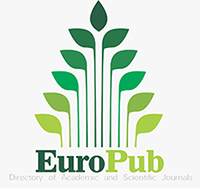Radiologic evaluation of paranasal anomalies in the presence of accessory maxillary ostium in pediatric patients
Accessory maxillary ostium and paranasal anomaly presence in pediatric patients
DOI:
https://doi.org/10.5281/zenodo.10019770Keywords:
Accessory ostium, maxillary sinus, ostio-meatal complex, paranasal sinus tomography, pediatric sinusAbstract
Aim: Accessory maxillary ostium may have an embryologic association with the variations around the paranasal sinuses. This study aimed to investigate the cross-sectional and developmental associations of the accessory maxillary ostium with various anatomical variations around the ostio-meatal complex and maxillary sinus in children.
Materials and Methods: Medical records and paranasal computed tomography sections of 457 patients aged 3–17 years were reviewed retrospectively. The study group consisted of 184 patients with accessory maxillary ostium (AMO group), and the control group consisted of 273 patients without accessory ostium. The frequencies of the anatomic variations around the ostio-meatal complex and maxillary sinus pathologies were compared between groups.
Results: Compared with the control group, the AMO group had a higher frequency of anteverted middle turbinate (p=0.036, X2= 4.405), mucus retention cyst (p=0.007, X2= 7.179), Haller cell (p=0.003, X2= 8.875), and maxillary sinus septa (p=0.042, X2= 4.14).
Conclusion: Accessory maxillary ostium was significantly associated with the presence of anteverted middle turbinate, mucus retention cyst, Haller cell, and maxillary sinus septa in children.
Keywords: Accessory ostium, maxillary sinus, ostio-meatal complex, paranasal sinus tomography, pediatric sinus
Downloads
References
Kane KJ. Recirculation of mucus as a cause of persistent sinusitis. Am J Rhinol 1997;11:361-369.
Yenigun A, Fazliogullari Z, Gun C, et al. The effect of the presence of the accessory maxillary ostium on the maxillary sinus. Eur Arch Otorhinolaryngol 2016;273:4315-4319.
Joe JK, Ho SY, Yanagisawa E. Documentation of variations in sinonasal anatomy by intraoperative nasal endoscopy. Laryngoscope 2000;110:229-235.
Jones NS. CT of the paranasal sinuses: a review of the correlation with clinical, surgical and histopathological findings. Clin Otolaryngol Allied Sci 2002;27:11-17.
Parsons DS, Wald ER. Otitis media and sinusitis: similar diseases. Otolaryngol Clin North Am 1996;29(01):11–25
Genc S, Ozcan M, Titiz A, et al. Development of maxillary accessory ostium following sinusitis in rabbits. Rhinology 2008;46:121-24.
Kumar H, Choudhry R, Kakar S. Accessory maxillary ostia: topography and clinical application. J Anat Soc India 2001;50:3-5.
Ali IK, Sansare K, Karjodkar FR, et al. Cone-beam computed tomography analysis of accessory maxillary ostium and Haller cells: Prevalence and clinical significance. Imaging Sci Dent 2017;47:33-37.
Ozel HE, Ozdogan F, Esen E, et al. The association between septal deviation and the presence of a maxillary accessory ostium. Int Forum Allergy Rhinol 2015;5:1177-80.
Anon JB, Rontal M, Zinreich SJ. Anatomy of the paranasal sinuses. New York: Thieme, 1996:xv,199 p.
Sahin C, Ozcan M, Unal A. Relationship between development of accessory maxillary sinus and chronic sinusitis. Med J of Dr. DY Patil University 2015;8:606-8.
Matthews BL, Burke AJ. Recirculation of mucus via accessory ostia causing chronic maxillary sinus disease. Otolaryngol Head Neck Surg 1997;117:422-23.
Chung SK, Dhong HJ, Na DG. Mucus circulation between accessory ostium and natural ostium of maxillary sinus. J Laryngol Otol 1999;113:865-67.
Kantarci M, Karasen RM, Alper F, et al. Remarkable anatomic variations in paranasal sinus region and their clinical importance. Eur J Radiol 2004;50:296-302.
Stackpole SA, Edelstein DR. The anatomic relevance of the Haller cell in sinusitis. Am J Rhinol 1997;11:219-23.
Talo Yildirim T, Guncu GN, Colak M, et al. Evaluation of maxillary sinus septa: a retrospective clinical study with cone beam computerized tomography (CBCT). Eur Rev Med Pharmacol Sci 2017;21:5306-14.
Aramani A, Karadi RN, Kumar S. A Study of Anatomical Variations of Osteomeatal Complex in Chronic Rhinosinusitis Patients-CT Findings. J Clin Diagn Res 2014;8:Kc01-04.
Harar RP, Chadha NK, Rogers G. Are maxillary mucosal cysts a manifestation of inflammatory sinus disease? J Laryngol Otol 2007;121:751-54.
Kanagalingam J, Bhatia K, Georgalas C, et al. Maxillary mucosal cyst is not a manifestation of rhinosinusitis: results of a prospective three-dimensional CT study of ophthalmic patients. Laryngoscope 2009;119:8-12.
Downloads
Published
How to Cite
Issue
Section
License
Copyright (c) 2023 Chronicles of Precision Medical Researchers

This work is licensed under a Creative Commons Attribution-NonCommercial-ShareAlike 4.0 International License.





